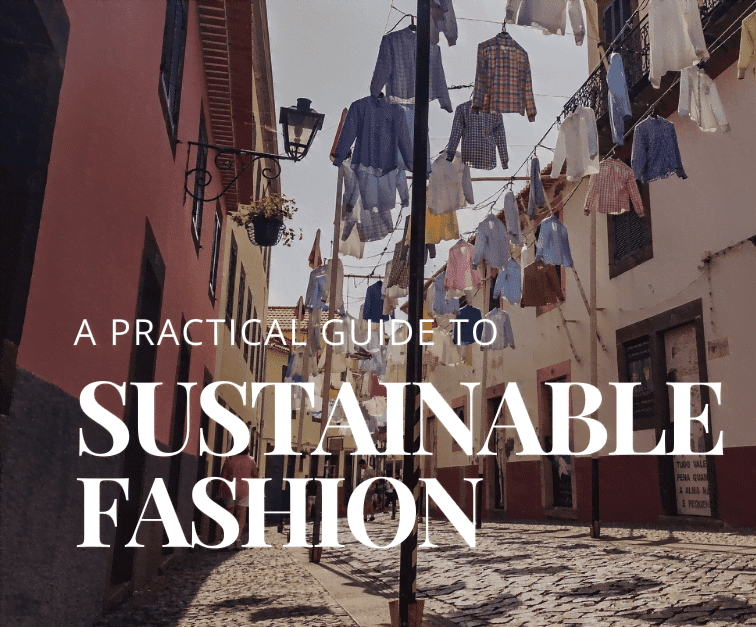Last Updated on August 10, 2023 by Our Editors
Green bonds are an innovative financial tool that allows investors to fund sustainable and environmentally friendly projects. These bonds are a rapidly growing segment of the global bond market, with issuers using the funds to finance projects that reduce carbon emissions, promote clean energy, and meet sustainability goals. As concerns about climate change and environmental sustainability continue to grow, green bonds are becoming an increasingly popular investment option for socially responsible investors looking to align their portfolios with their values. In this article, we will explore the basics of green bonds and the benefits of investing in sustainability.

What Are Green Bonds?
Green bonds are a type of fixed-income security that raise capital for environmentally friendly and sustainable projects. Governments, municipalities, and corporations issue these bonds to finance projects that promote clean energy, reduce greenhouse gas emissions, conserve natural resources, and promote environmental sustainability.
The proceeds from green bond issuances are earmarked for specific projects that meet predefined environmental criteria. Examples of projects that can be financed through green bonds include renewable energy projects such as wind and solar power plants, sustainable agriculture and forestry initiatives, green buildings, public transportation systems, and other sustainable infrastructure projects.
Green bonds provide an opportunity for investors to take part in projects that have a positive environmental impact while earning a financial return. The interest rates and returns on green bonds are comparable to traditional bonds, but investors have the added benefit of knowing that their investment is contributing to a sustainable future.
Since the first green bond was issued in 2007, the market for these securities has grown rapidly, with total issuances reaching over $300 billion in 2021. As concerns about climate change and sustainability continue to grow, green bonds are becoming an increasingly important tool for governments and corporations to raise capital for sustainable projects, and for investors looking to align their investments with their values.
How Does A Green Bond Work?
Green bonds are a financial instrument that enables investors to support environmentally sustainable projects while earning a return on their investment. Governments, corporations, and other organizations issue them to raise capital for projects that have a positive environmental impact. Here’s how green bonds work:
- Issuance
The issuer determines the amount of capital they need to raise and the specific project(s) that the bond proceeds will finance. The issuer then works with an underwriting bank or financial institution to structure the bond issuance.
- Certification
The issuer engages a third-party verifier to certify that the bond meets specific environmental criteria. The verifier assesses the environmental impact of the project and ensures that it meets established sustainability standards.
- Marketing
The green bond is marketed to investors who are interested in sustainable finance and ESG investing. Investors who purchase green bonds are typically seeking both financial returns and social or environmental impact.
- Use of Proceeds
The proceeds from the green bond are used to finance the specific project(s) that were identified during the issuance process. The issuer provides regular updates to investors on the progress of the project(s) and the use of funds.
- Financial Returns
Green bonds offer a similar return to traditional bonds with the added benefit of having a positive environmental impact. The interest payments and principal repayment are made to investors under the terms of the bond.
Green bonds are an increasingly popular investment option for investors who are seeking to align their investments with their values. As sustainable finance and ESG investing continue to grow, green bonds are expected to become an even more important tool for financing environmentally sustainable projects.
What Is The History Of Green Bonds?
Green bonds have a relatively short but rapidly evolving history. European Investment issued the first green bond in 2007 Bank (EIB) to finance projects related to renewable energy and energy efficiency. Since then, the market for green bonds has grown significantly, with issuances increasing from $3 billion in 2012 to over $300 billion in 2021.
In 2013, the International Capital Markets Association (ICMA) published the Green Bond Principles (GBP), a set of voluntary guidelines for issuers of green bonds. The GBP provides a framework for issuers to disclose information about the use of proceeds, the selection of projects, and the management of funds. Issuers and investors have widely adopted the GBP to ensure transparency and accountability in the green bond market.
Besides the GBP, there are several other standards and certifications that have been developed to provide assurance to investors that green bonds meet established sustainability criteria. These include the Climate Bonds Standard, the Sustainability Bond Guidelines, and the Green Loan Principles.
The market for green bonds has also expanded beyond the initial issuers, such as development banks and governments, to include corporations and municipalities. This expansion has helped to increase the diversity of projects financed by green bonds and has made them more accessible to a wider range of investors.
Overall, the history of green bonds reflects a growing recognition of the importance of sustainable finance and the need to channel capital towards projects that have a positive environmental impact. As the market for green bonds continues to evolve, it is expected to play an increasingly important role in financing the transition to a more sustainable economy.
Benefits of green bonds
Green bonds offer a range of benefits for both investors and issuers and are an increasingly popular tool for impact investing and sustainable finance. Here are some benefits at a glance:
- Positive Environmental Impact
Green bonds finance projects that have a positive environmental impact, such as renewable energy, sustainable agriculture, and green buildings, allowing investors to take part in impact investing.
- Diversification
Green bonds offer investors a way to diversify their portfolios by investing in a new asset class that has low correlation with traditional stocks and bonds.
- Risk Management
Green bonds can help mitigate risks associated with climate change and environmental degradation by financing projects that promote sustainable practices and reduce carbon emissions.
- Transparency
The certification and disclosure requirements associated with green bonds provide investors with transparency into the use of proceeds and the environmental impact of the projects financed.
- Reputation
Issuing green bonds can enhance the reputation of corporations and governments by demonstrating a commitment to sustainability and responsible investing.
- Cost Savings
Green bonds can offer issuers lower borrowing costs than traditional bonds, as they can attract a broader range of investors, including those who are specifically interested in sustainability.
- Access to Capital
Green bonds provide issuers with access to a new pool of capital that is specifically interested in impact investing.
- Market Differentiation
Issuing green bonds can differentiate issuers from competitors and position them as leaders in sustainable finance.
- Long-Term Value
Financing sustainable projects through green bonds can help create long-term value for issuers and investors by promoting sustainable practices and reducing environmental risks.
Want to read more like this?
Get similar stories and a free sustainability checklist delivered to your inbox.

Like our content?
Get similar stories and a free sustainability checklist delivered to your inbox.

Different Types Of Green Bonds
Green bonds are a type of fixed-income security that raise capital for environmentally friendly and sustainable projects. They are an innovative financial tool that allows investors to fund sustainable and environmentally friendly projects. Green bonds are classified based on the type of project they finance, the issuer, and the level of certification. In this article, we will explore the different green bonds, including climate bonds.
- Project-Linked Green Bonds
Project-linked green bonds are issued to finance a specific project or a group of projects that meet environmental criteria. The bonds are linked to the specific project(s) that the proceeds will finance, providing investors with a high level of transparency and clarity on the use of proceeds. Examples of projects that can be financed through project-linked green bonds include renewable energy projects, energy-efficient buildings, and sustainable agriculture projects.
2 Use-of-Proceeds Green Bonds
Use-of-proceeds green bonds are issued to finance a range of eligible green projects, without being linked to a specific project. The proceeds from use-of-proceeds green bonds are typically used to finance a portfolio of projects that meet predetermined environmental criteria. The issuer provides regular updates to investors on the use of proceeds and the progress of the projects.
3. Sovereign Green Bonds
Sovereign green bonds are issued by governments to finance environmentally sustainable projects. The proceeds from sovereign green bonds are typically used to finance renewable energy projects, energy efficiency initiatives, and other projects that have a positive environmental impact. Developed countries typically issued sovereign green bonds and are a way for governments to demonstrate their commitment to reducing carbon emissions and meeting sustainability goals.
4. Corporate Green Bonds
Corporate green bonds are issued by corporations to finance sustainable projects. The proceeds from corporate green bonds are typically used to finance renewable energy projects, sustainable agriculture projects, and other projects that have a positive environmental impact. Corporate green bonds provide companies with an opportunity to raise capital for environmentally sustainable projects while demonstrating their commitment to sustainability and corporate social responsibility.
5. Certified Green Bonds:
Certified green bonds are issued by issuers that have obtained third-party certification that their bonds meet specific environmental criteria. The certification process ensures that the issuer has followed established sustainability standards and that the proceeds from the bond will finance eligible green projects. Examples of third-party certifications include the Climate Bonds Standard and the Green Bond Principles.
Climate Bonds
Climate bonds are a type of certified green bond that is specifically designed to finance projects that contribute to a low-carbon economy. The Climate Bonds certify climate bonds Initiative, a non-profit organization that works to mobilize bond markets to address climate change. The certification process for climate bonds is rigorous and ensures that the proceeds from the bond will finance projects that contribute to a low-carbon economy, such as renewable energy projects, public transportation systems, and energy-efficient buildings.
Green bonds are an increasingly popular investment option for investors who are seeking to align their investments with their values. The different green bonds provide investors with a range of investment options, depending on their preferences and investment objectives. Climate bonds, in particular, are a rapidly growing segment of the green bond market, as investors seek to support projects that contribute to a low-carbon economy. As sustainable finance and ESG investing continue to grow, green bonds are expected to become an even more important tool for financing environmentally sustainable projects.
Summing Up!
Green bonds have emerged as a powerful tool for financing sustainable projects and promoting environmentally responsible investment. They allow investors to support projects that have a positive impact on the environment while generating financial returns. Green bonds have evolved rapidly in the past decade, with an increasing number of issuers, investors, and third-party certifications. This growth reflects a growing recognition of the importance of sustainable finance and the need to channel capital towards projects that promote a more sustainable future.
Investors have several options for investing in green bonds, with different bonds targeting different projects, issuers, and certification standards. Climate bonds, in particular, are a rapidly growing segment of the green bond market and have been critical in financing projects that contribute to a low-carbon economy. As sustainable finance and ESG investing continue to gain momentum, green bonds are expected to become an increasingly important tool for financing environmentally sustainable projects.
Green bonds are more than just a financial product; they reflect a changing mindset toward investment and sustainability. They provide investors with an opportunity to support projects that promote a more sustainable future while generating financial returns. As we move towards a more sustainable future, green bonds will play an increasingly important role in driving the transition.
Join the sustainability movement today with Ecowiser! Visit our website to learn more about our eco-friendly products and make a difference for the planet. Shop now and take a step towards a greener future!
Want to read more like this?
Get similar stories and a free sustainability checklist delivered to your inbox.

Like our content?
Get similar stories and a free sustainability checklist delivered to your inbox.














